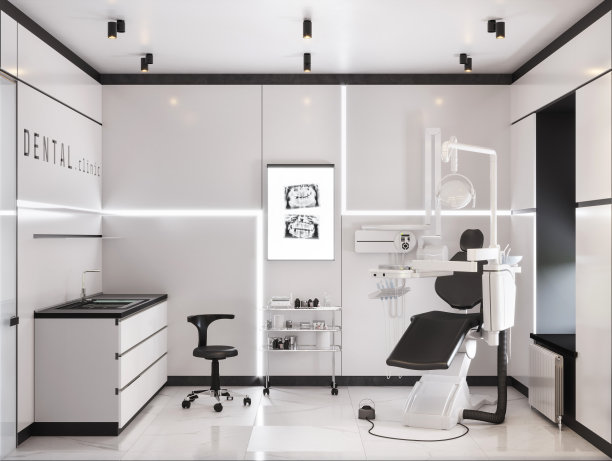Revolutionizing Dental Restorations Exploring the Benefits and Innovations of Dental Implant Technology for Improved Oral Health
Summary: This article delves into the transformative impact of dental implant technology in modern dentistry, providing an in-depth exploration of its benefits and innovations. Highlighting advancements in materials and techniques, we will examine how dental implants enhance oral health, restore functionality, and improve aesthetics. Furthermore, we will discuss the role of patient-specific treatments in optimizing outcomes and the long-term advantages of implants over traditional restorations. Through this comprehensive analysis, it becomes clear that dental implant technology not only revolutionizes dental restorations but also significantly contributes to overall well-being.
1. Enhanced Oral Functionality with Implants

Dental implants offer a remarkable improvement in oral functionality compared to traditional restoration methods. One of the most significant advantages is their ability to mimic natural tooth roots. This allows for better stability and strength during chewing, enabling patients to enjoy a more comprehensive diet without the fear of loosening or breaking their restorations.
Moreover, dental implants integrate with the jawbone through a process known as osseointegration. This biological bond promotes bone health and density, reducing the risk of bone loss that often accompanies missing teeth. Patients experience improved confidence in their ability to chew effectively and speak clearly, enhancing their quality of life.
In addition, the durability of dental implants surpasses that of bridges or dentures. With proper care and maintenance, implants can last a lifetime, making them a cost-effective long-term solution for tooth loss. Patients no longer have to frequently replace their restorations, which can save both time and money in dental care.
2. Aesthetic Restoration and Improved Confidence
Aesthetics play a crucial role in dental restorations, and dental implants deliver exceptional results in this area. Designed to resemble natural teeth, implants can restore a patients smile effectively. They come in various shapes, sizes, and materials, allowing for customization that matches the patients unique anatomy.
The ability to restore gaps in the smile without affecting adjacent teeth is another notable advantage of implants. Traditional bridges often require the alteration of surrounding teeth, which can compromise their integrity. In contrast, dental implants support natural teeth, preserving their structure and enhancing overall dental aesthetics.
The psychological benefits of improved aesthetics and confidence cannot be underestimated. Many patients report a significant boost in self-esteem after receiving dental implants. With a radiant smile, they are more inclined to engage socially and pursue professional opportunities, showcasing the importance of oral health in personal confidence and social interactions.
3. Innovations in Dental Implant Technology
The landscape of dental implant technology is constantly evolving, thanks to ongoing research and innovation. Today, advanced materials such as titanium and zirconia are widely used for their biocompatibility and strength. These innovative materials significantly enhance the success rates of implants, minimizing the risks of rejection or complications.
Additionally, new techniques such as computer-aided design (CAD) and computer-aided manufacturing (CAM) have transformed the way dental implants are placed. These technologies allow for precise planning and placement, leading to improved surgical outcomes and faster recovery times. Patients can now benefit from minimally invasive procedures that not only reduce discomfort but also accelerate healing.
3D imaging technologies also play a crucial role in the planning and execution of implant surgeries. By providing detailed, three-dimensional views of a patient’s dental anatomy, dentists can create customized treatment plans that address individual needs effectively. This personalized approach enhances the precision of implant placement, leading to heightened success rates and patient satisfaction.
4. Long-term Health Benefits of Dental Implants
Investing in dental implants comes with essential long-term health benefits. One of the most significant is the preservation of jawbone integrity. When a tooth is lost, the underlying bone can begin to deteriorate due to lack of stimulation. Implants restore this stimulation, ensuring the jawbone remains healthy and robust.
Furthermore, dental implants contribute to the maintenance of facial structure. The loss of teeth can lead to changes in facial aesthetics, including sagging or sunken areas. By providing necessary support, implants help to maintain the natural contour of the face, promoting a youthful appearance.
Finally, the ease of maintaining dental implants compared to other restoration options fosters improved oral hygiene. Unlike removable dentures, implants require regular brushing and flossing, encouraging patients to adopt better oral care habits. This commitment to hygiene significantly reduces the chances of gum disease and other oral health issues, ultimately promoting better overall health.
Summary:
In conclusion, dental implant technology has revolutionized dental restorations by providing enhanced functionality, aesthetic appeal, and lasting health benefits. Its innovative materials and surgical techniques have further elevated patient outcomes, allowing for personalized treatments that resonate with individual needs. As we look toward the future of dental care, it is evident that dental implants will continue to play a significant role in improving oral health and enhancing the quality of life for countless patients.
This article is compiled by Vickong Dental and the content is for reference only.


